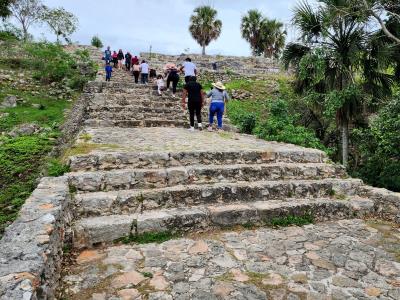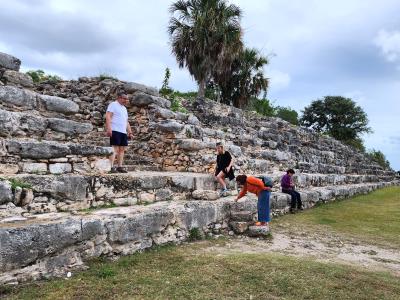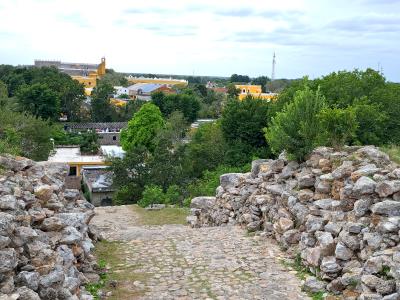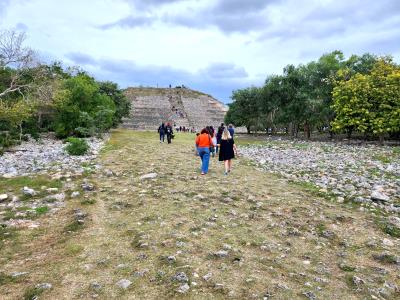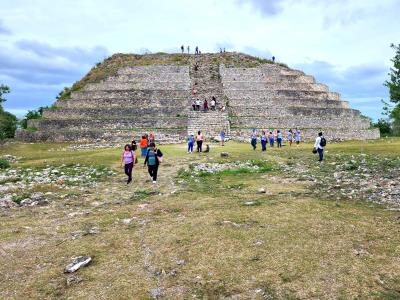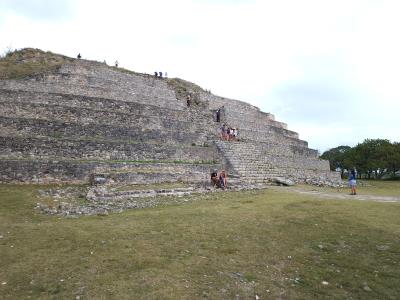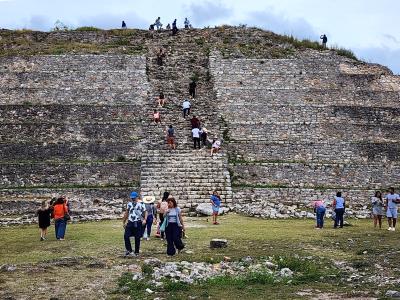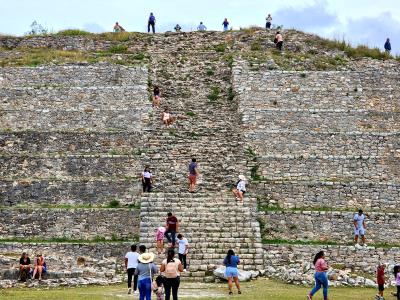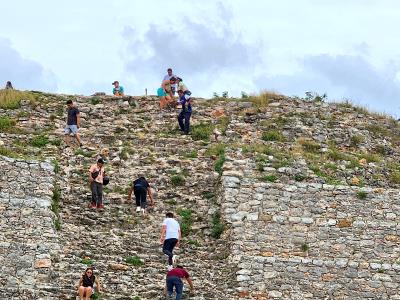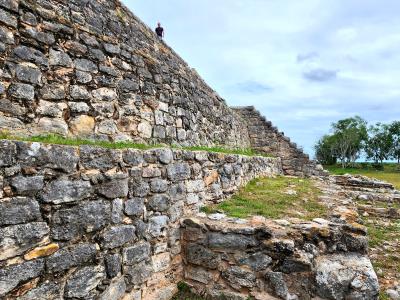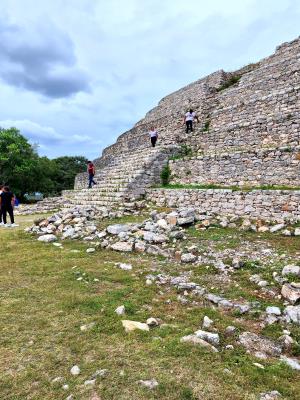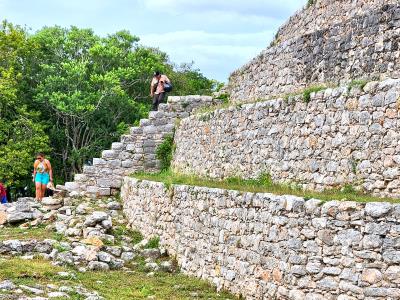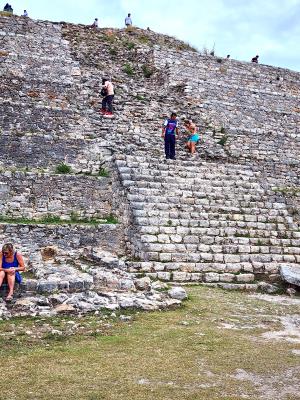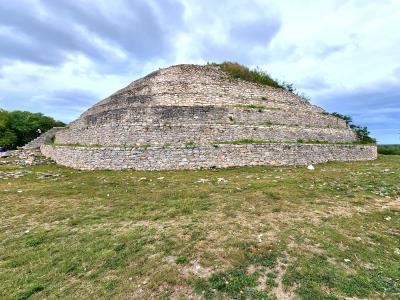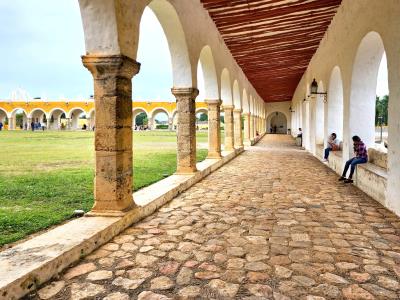Day 11 1/21/2024
Izamal, Mexico
Frank's Trip
CLICK on any image to enlarge - use mouse cursor to move enlargement it if doesn't fit area
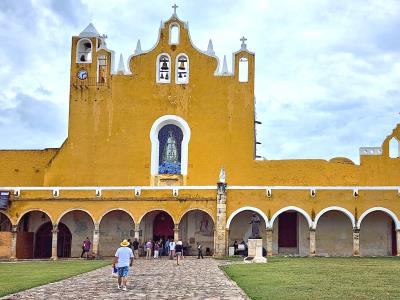
Magic City...
The little town of Izamal really is somewhat magical. Clean, pleasant, and yellow everywhere you look. The town doesn't have a huge population and just walking around through the town and around the downtown area surrounding the Convent, I wonder if everyone in town doesn't have some sort of little business selling something - there is such a proliferation of little shops and stands!
One of the first noticeable things coming into town is the small chapel Capilla de la Santa Cruz - apparently one of the oldest in the area. Next to it a very nice little park catches the eye.
Its nomination for World Heritage status is based on its Mayan roots and continuing heritage from the numerous archaeological sites in the town and proximity. It seems to have been a major area centered on the site of an important (though unremarkable, IMHO) pyramid Kinich Kak Moo in the period of 600 AD - 800 AD. A number of roads centered on Izamal which tied it to a number of other Mayan cities and indicates it as a center of power.
 Izamal
Izamal
Izamal - the Yellow City - Pueblo Dorado (Golden Town) With a population of about 18,000 packed into just four square miles, Izamal is a compact and very walkable old colonial town. Izamal Mexico is a pueblo magico (magic town) that’s been nominated for the UNESCO World Heritage Sites list.
This small town is one of the 135 or so pueblos mágicos (magic towns). So just what is a pueblo magico? This prestigious designation is awarded by Mexico’s Tourism Secretary to exceptional small towns in the country. To qualify for the Mexico Pueblo Magico program, towns need to have good infrastructure and plenty of things to do that a visitor will enjoy. These pueblos also need to be safe, with something noteworthy about them — like how Izamal is completely yellow.
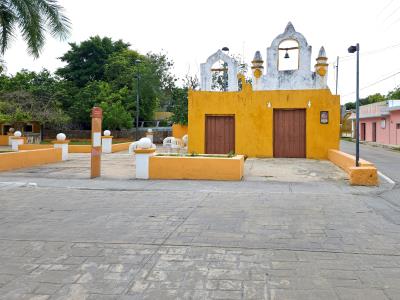
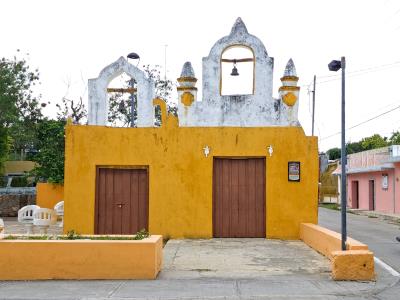
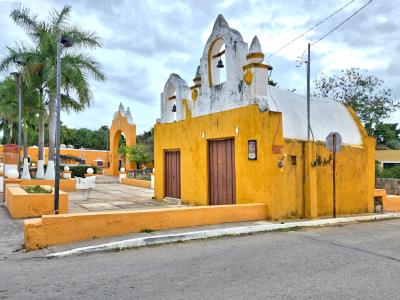
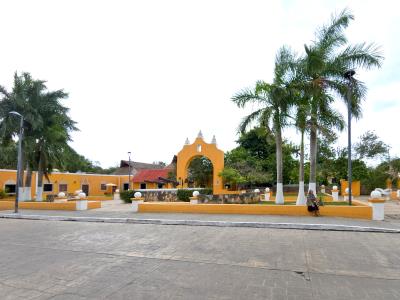
ABOVE
Capilla de la Santa Cruz
<< LEFT & RIGHT >>
Plazuela de las Cruces
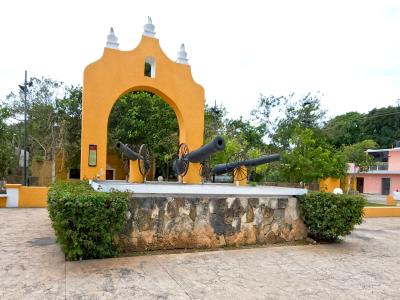
Along the streets of Izamal
Yes, it really is "The Yellow City". Every building I saw in town was yellow - while riding in my taxi, at the outskirts I did see a couple of blue and a couple white buildings.
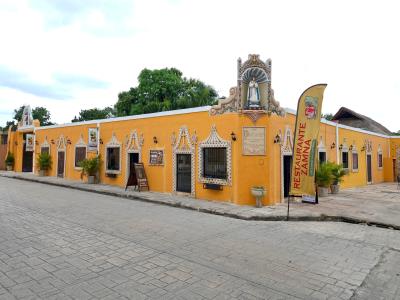
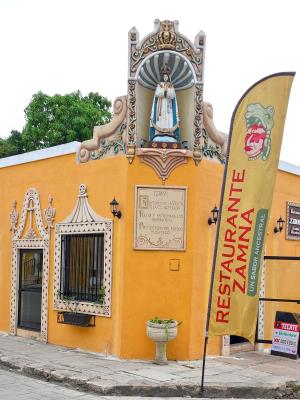
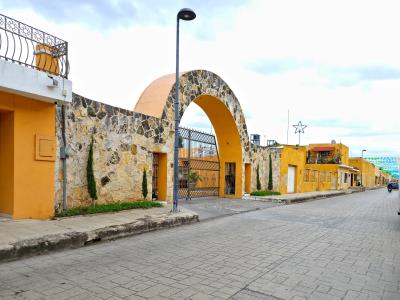
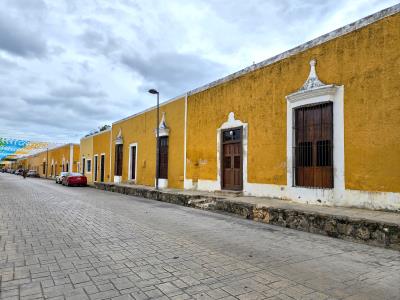
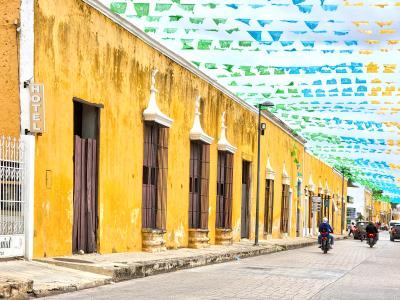
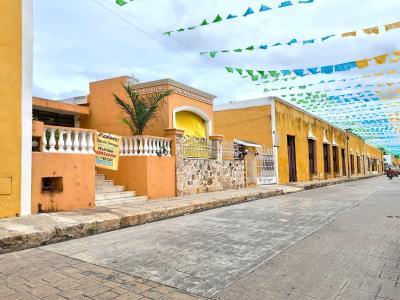
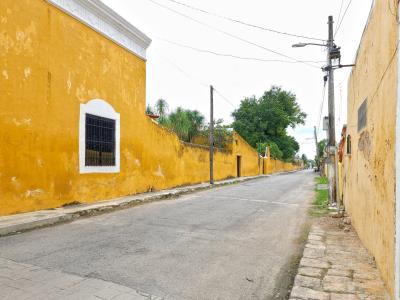
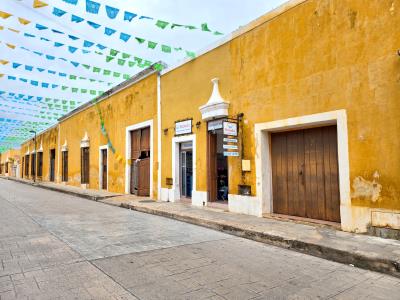
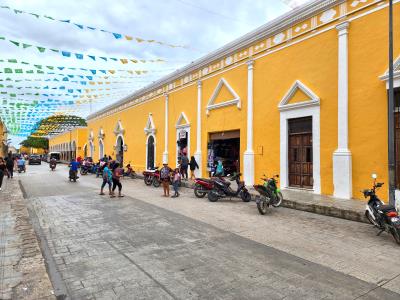
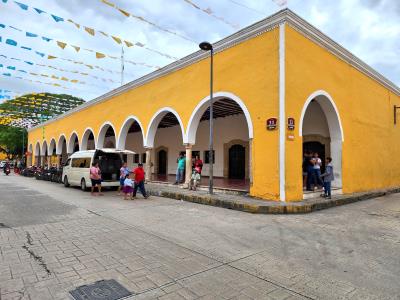
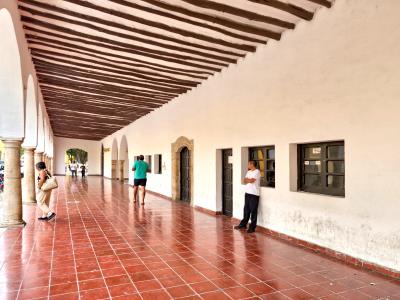
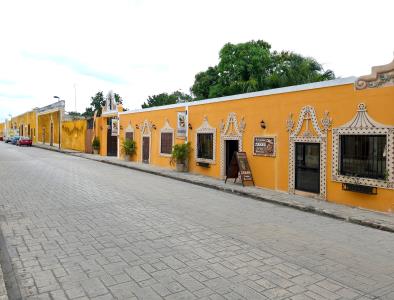
Itzamna Park
Next to Convent of San Antonio de Padua
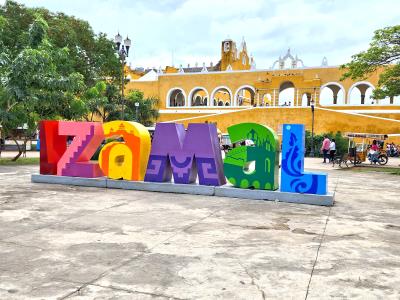
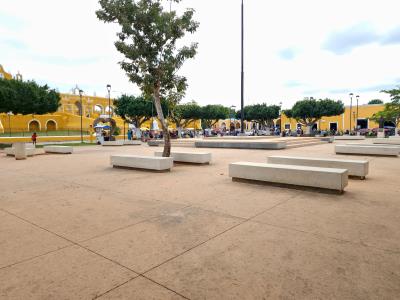
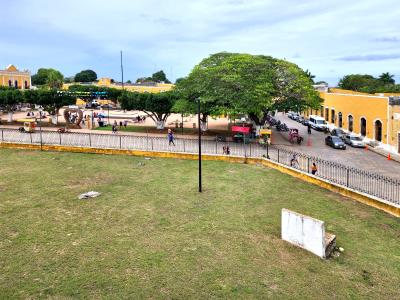
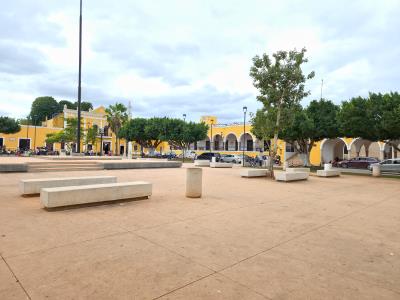
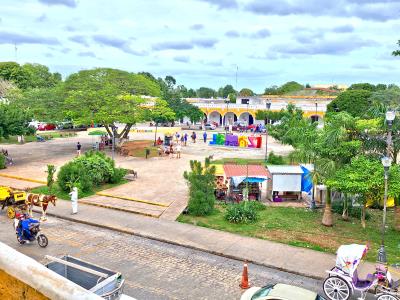


Convent of San Antonio de Padua
One of the most spectacular religious temples in the Yucatan Peninsula is the ancient Convent of San Antonio de Padua, no doubt. In fact, it has the largest enclosed atrium in the Americas and the second largest on the planet. It’s second only to St. Peter’s Square in Vatican City. The building was begun in 1549 and completed in 1561 on the site of the destroyed Ppap Hol Chak Mayan temple. To this day, pilgrims head to this site in Izamal to seek blessings from the Saints.
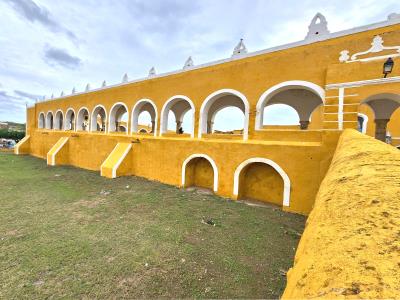
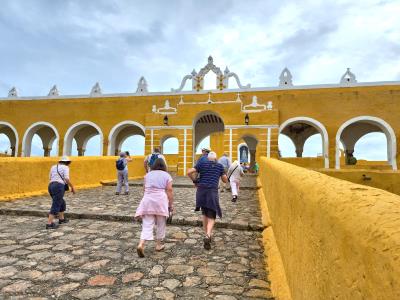
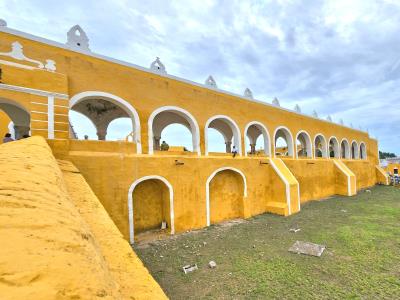
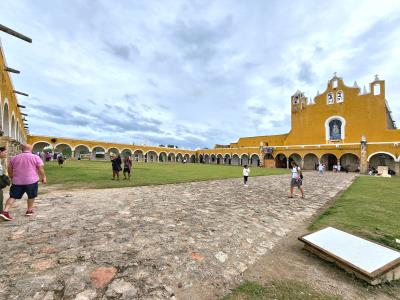

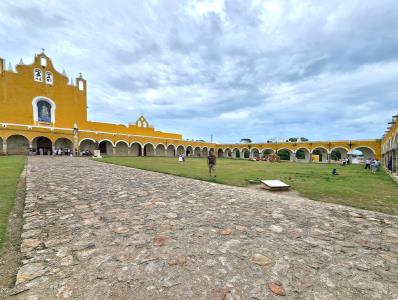
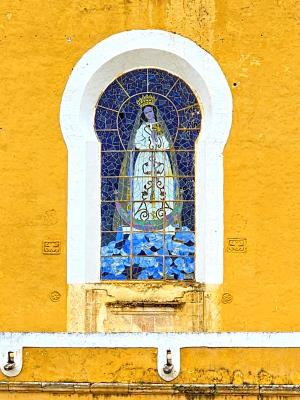
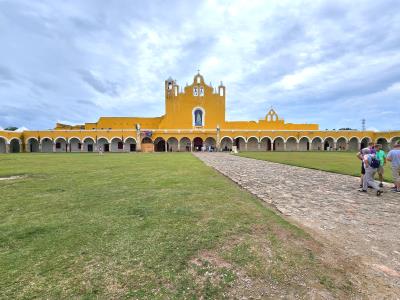
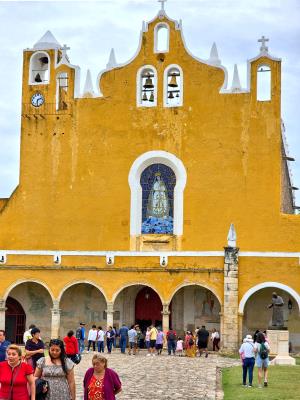
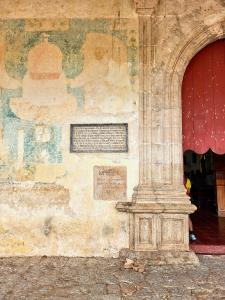
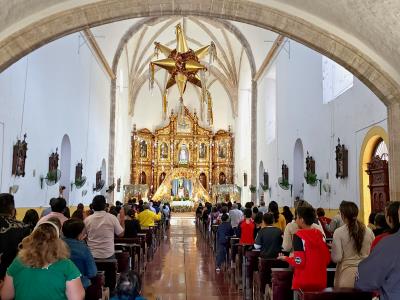
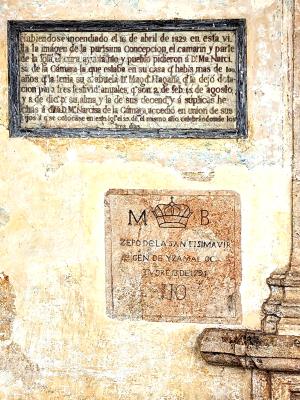
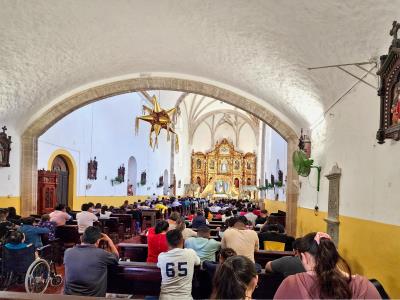
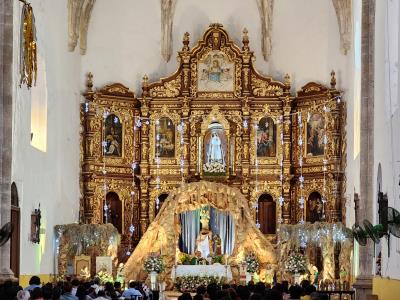
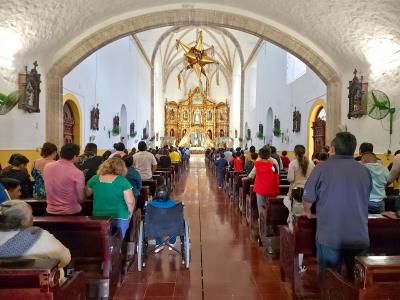
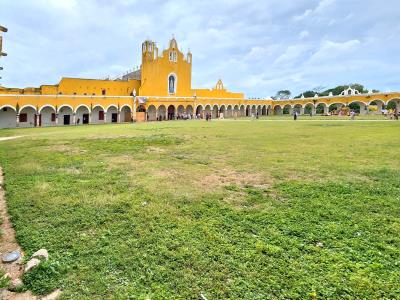
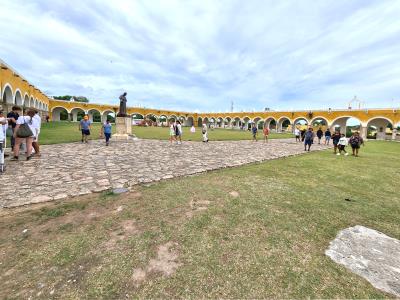
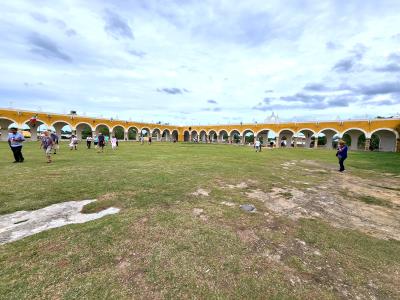
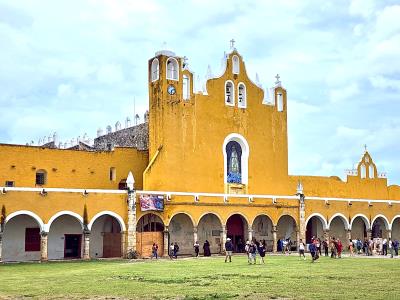
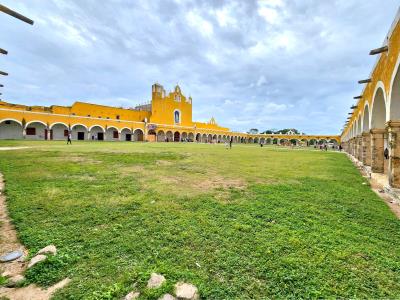
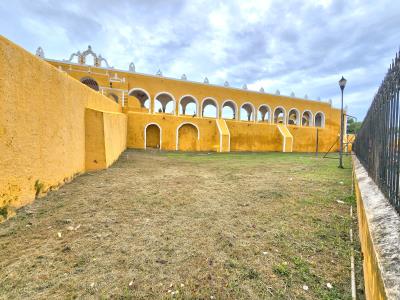
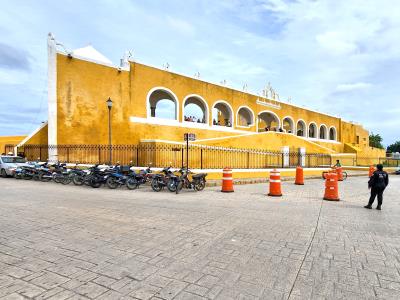
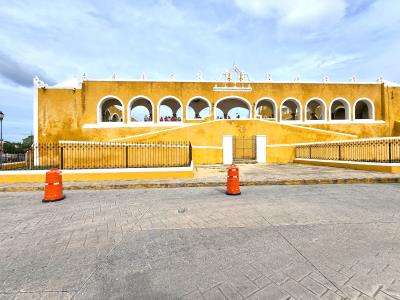
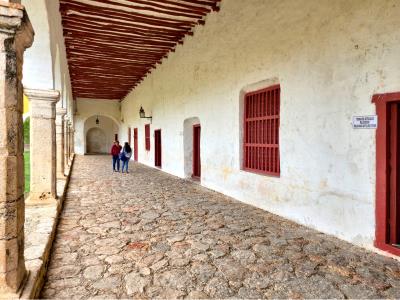
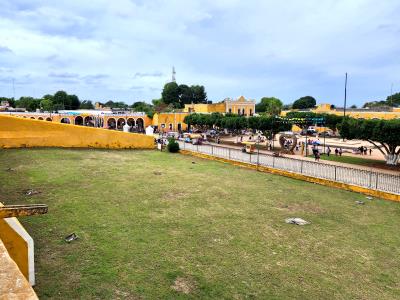
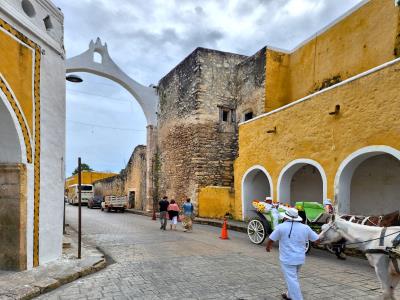
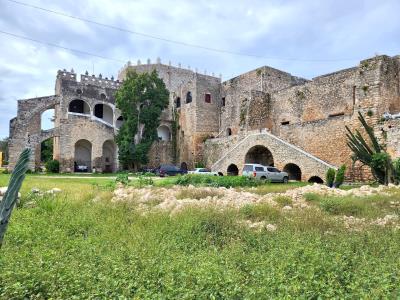
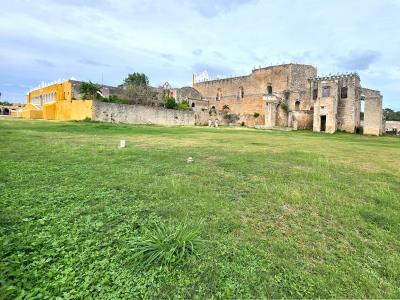
Kinich Kakmó Pyramid
Located in Izamal not far from the Convent is Kinich Kakmó Pyramid - named after a Mayan solar deity. Kinich Kak Moo, meaning “fire parrot,” had a macaw’s head and flew to Earth to accept offerings when the sun reached its apex in the sky. The pyramid is still an important pilgrimage site for the Maya, and a popular place for Izamal visitors. The pyramid was constructed around 400 - 600 AD. At 920,000 cubic yards, it’s one of the biggest pyramids in Mexico by volume (the largest is in Cholula).
